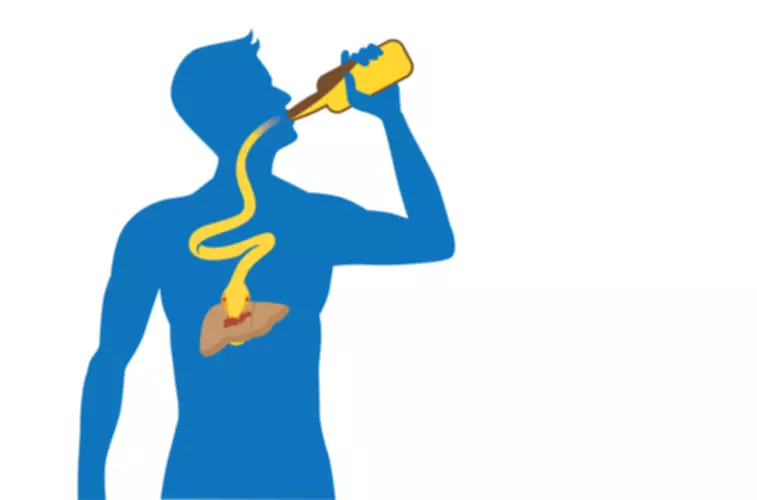Sober living
Alcoholic cardiomyopathy: an update European Heart Journal

While many people will recover from this condition if they abstain from alcohol, others will have symptoms and related problems for the rest of their life. If you are a heavy drinker, talking to a primary care provider can help keep this condition from becoming even more severe in the future, or even prevent it from happening. Your provider is the best source of information and guidance, and they can connect you to other resources that can help and experts who can assist. In some cases, especially those that are more severe, heart failure symptoms and related conditions may develop or get worse.
Heart Transplant
Under the latter conditions, autophagy via degradation of macromolecular intracellular constituents becomes important in generating and recycling carbons and amino acids. However, there is evidence that there is enhanced autophagy in certain cardiac pathological conditions such as heart failure, cardiomyopathy, and cardiac hypertrophy, conditions in which there are increased levels of angiotensin II (69). Interestingly, angiotensin II administration induces skeletal muscle atrophy in rodents, and mechanisms include increased expression of the E3 ligases atrogin-1/MuRF-1 (70). Animals received different concentrations of ethanol in their drinking water (10%, 14%, 18% v/v) for variable weeks (12, 8, and 4, respectively). In all three ethanol groups, compared to control groups there was a significant increase in heart weight-to-body weight ratios.
Clinical manifestations and diagnosis of alcohol-induced cardiomyopathy
- Continued heavy alcohol use, on the other hand, will continue to make alcoholic cardiomyopathy worse.
- Oxidative stress and inflammation contribute to the death of heart muscle cells (cardiomyocytes) through a process called apoptosis.
- In addition, people who receive early treatment for ACM, including medication and lifestyle modifications, have a better chance of improving their heart function and overall health.
- People with alcoholic cardiomyopathy often have a history of heavy, long-term drinking, usually between five and 15 years.
More research is required using more contemporary measures of mitochondrial function as well as determining changes in mitochondrial DNA. Experimental studies analysing the depressive properties of alcohol on the cardiac muscle invariably use similar approaches[31-39]. Accordingly, a given amount of alcohol is administered to volunteers or alcoholics, followed by the measurement of a number of haemodynamic parameters and, in some cases, echocardiographic parameters. Generally, following alcohol intake, healthy, non-drinking individuals showed an increase in cardiac output due to a decline in peripheral arterial resistance and an increase in cardiac frequency[31].
- In their autopsies, he described finding dilated cavities of the heart and fatty degeneration of the ventricular walls[14].
- After a person with AUD completes a rehab program, they may need aftercare support.
- These changes, though subtle, were similar to those found by Ferrans and Hibbs in eight deceased individuals diagnosed with ACM[42,43].
- The per capita alcohol consumption of 9.7 l pure ethanol and the early onset of regular or episodic intensive drinking among young people in Germany consequently leads to high alcohol-related morbidity and mortality [5].
- This usually involves limiting your sodium (salt) and cholesterol intake and ensuring you are getting a diet that provides all essential nutrients.
Long-Term Outlook for ACM
A person can speak with a doctor about any concerns regarding lifestyle changes. A standard drink contains 10 g of alcohol, equivalent to 100 mL of wine, 300 mL of beer, or 40 mL of spirits. Alcoholic cardiomyopathy is best managed with an interprofessional approach with the involvement of primary care physician and cardiology. Other deficiencies including nutritional such as thiamine or other toxic materials ingested may lead to additional concomitant complications. Some of the above tests may also use materials injected into your bloodstream that are highly visible on certain types of imaging scans. Those materials, such as contrasts or tracers, are helpful because they can reveal blood flow blockages that would be very hard to see otherwise.
Basic studies on molecular mechanisms of myocardial damage

Several inter-related mechanisms may include oxidative stress, apoptotic cell death, impaired mitochondrial bioenergetics/stress, derangements in fatty acid metabolism and transport, and accelerated protein catabolism. In this review, we discuss these mechanisms, as well as the potential importance of drinking patterns, genetic susceptibility, nutritional factors, ethnicity, and sex in the development of ACM. Prognosis in individuals with low or moderate consumption up to one or two drinks per day in men and one drink in women is not different from people who do not drink at all. In CAD, diabetes, and stroke prevention the J‑type mortality curves even indicate some benefit apart from the social ”well-being“. In patients with chronic alcohol use disorders and severe heart failure prognosis is poor, since continued alcohol abuse results in refractory congestive heart failure. Death might also be sudden due to arrhythmias, heart conduction block, and systemic or pulmonary embolism.
Blood Pressure & Fluid Regulation

The myocyte mitochondria in the hearts of persons exposed to alcohol are clearly abnormal in structure, and many believe that this may be an important factor in the development of AC. More specifically, atrial fibrillation with rapid ventricular response is a cause of arrhythmia-induced cardiomyopathy,61 which can potentially worsen LVEF in alcoholic cardiomyopathy is especially dangerous because AC patients, on top of the direct toxic effect of ethanol, acetaldehyde damage, or the aforementioned genetic factors. There are several plasma biomarkers of oxidative stress, such as 8-isoprostane (34). Caution for anticoagulation is warranted due to the problems of noncompliance, trauma, and overdosage especially in hepatic dysfunction.
Patterns of Drinking: Binge Drinking
Cardiac MRI may be helpful in the differential diagnosis to hypertrophic cardiomyopathy, storage diseases, and inflammatory cardiomyopathy. For a comprehensive overview see Table 1 (combined data from [6, 8, 24, 28]). The source was identified to be the filter of choice for wine and beer, i.e., diatomaceous earth https://ecosoberhouse.com/ [36]. The German word for it is Kieselguhr, a beige powder made up of the skeletons of diatoms. The trace amounts of arsenic have not been comparable to the arsenic-in-beer endemic in Manchester but may still reach up to 10-times the amount admitted for arsenic in drinking water in the European Union and the US.
It is therefore possible that most of these studies may have also consistently omitted most alcohol abusers in whom alcohol had already caused significant ventricular dysfunction. Acetaldehyde is a potent oxidant and, as such, increases oxidative stress, leading to the formation of oxygen radicals, with subsequent endothelial and tissue dysfunction. Mitochondria play an essential role in cellular metabolism, and disruption of their function can have profound effects on the entire cell.
- This substance is a potent inhibitor of the enzyme acetaldehyde dehydrogenase, so it increases the presence of acetaldehyde, and it promotes its effects.48,50 The harmful effects of this substance have been found to be exerted at various levels, in both animal and human models.
- The available research shows that if you limit your alcohol intake to a certain amount, you’re less likely to develop alcohol-related health problems, including alcohol-induced cardiomyopathy.
- For many decades, ACM has been considered one of the main causes of left ventricular dysfunction in developed countries.
- The signs and symptoms of alcoholic cardiomyopathy (ACM) can vary depending on the severity of the condition.[6] In the early stages, people with ACM may not experience any symptoms.
- However, it’s more likely to happen in people with alcohol use disorders or who have genetic mutations that cause them to process alcohol more slowly.
- As women typically have a lower BMI than men, a similar amount of alcohol would reach a woman’s heart after consuming smaller quantities of alcohol.
